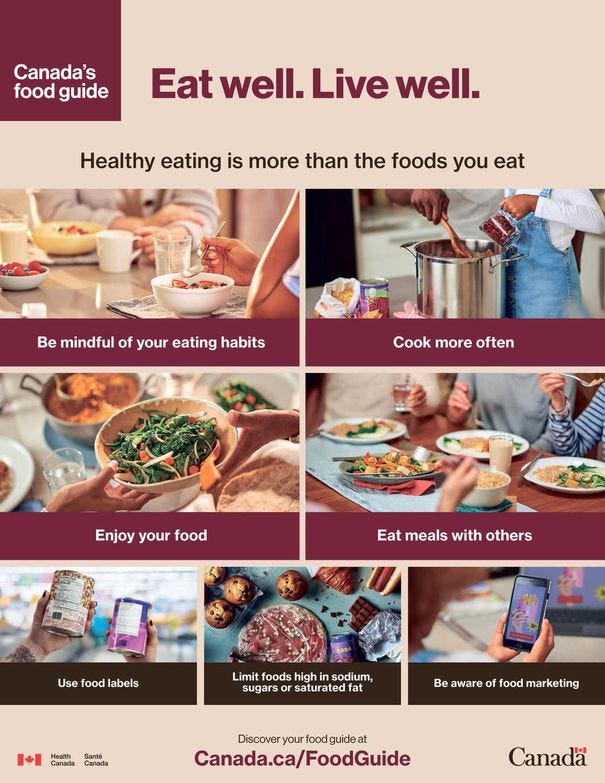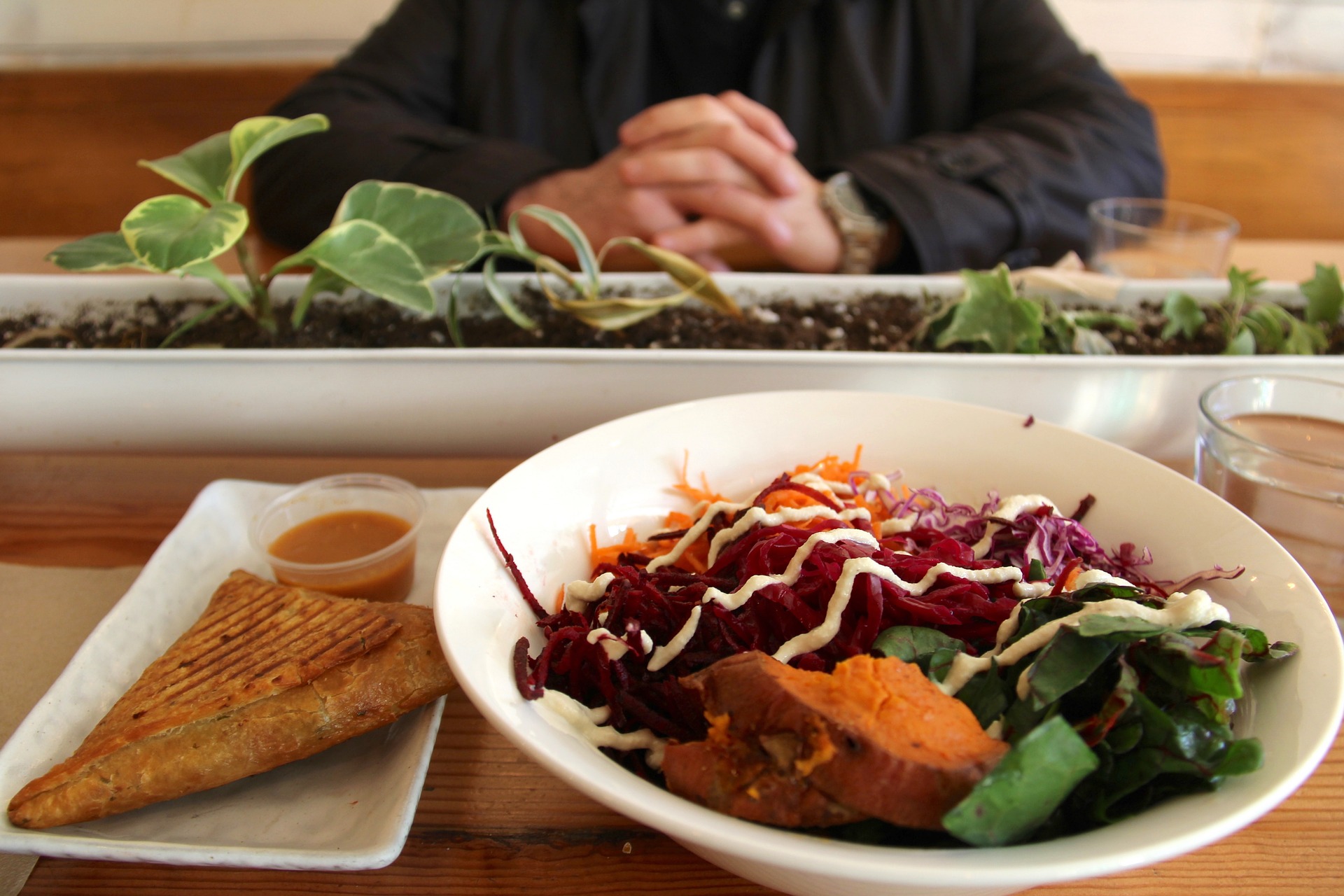Okay, you probably haven’t been waiting on pins and needles for the new Canadian food guidelines to be released, but they got something right that we can learn from here in the US.
In addition to some good nutritional common sense, they included mindfulness as it relates to eating.
That’s why I got excited to read the new guidelines. They didn’t ignore the crucial role that the mind has in our physical health.
5 of the 7 tips in this guide relate to mindful eating. It’s not all about what you put in our mouth.

Mindful eating means paying attention to what you’re putting into your body.
Pay attention to what you eat, when you eat, and why you eat.
Make cooking at home a bonding experience with friends or family.
Appreciate your food. Take joy in its textures and flavors and give thanks for its nourishing properties.
“Eating should be a pleasure.” — Canadian Health Minister Ginette Petitpas Taylor
Question and be skeptical of food marketing. Is that sugar filled yogurt cup or oatmeal packet really as healthy as the advertisers try to say?
Eat at specific times and with others instead of mindlessly munching.
I created an entire course on mindfulness and eating and you can see more about that here.
Of course, they had plenty to say about food as well.
The newest advice from Health Canada is to take out the meat and potatoes and replace them with leafier veggies and proteins like tofu and beans.
Grains should be whole and unprocessed. Think brown rice, quinoa, and farro.
They continue to give the common advice of limiting sugars, salt and saturated fat, but moving more toward a plant based diet is a major change from past iterations.
Picture your plate 1/2 full of colorful veggies, 1/4 full of protein, and 1/4 full of whole and unprocessed grains.

Most importantly, get the sugar out of your diet.
Including alcohol. A lot of alcoholic drinks are loaded with sugary syrups and flavoring. They’re nothing more than empty calories that spike your blood sugar and stress your body.
Eliminate sugary breakfast cereals and pastries.
Stop drinking fruit juice, and sweet beverages. The diet versions are no better, so have water be your go-to drink.
As expected, the guidelines aren’t without controversy.
There’s evidence that saturated fat has benefits, and at the very least, it’s not the evil we were once taught. You can read more about that here.
And a lot of people mistake less meat with more refined carbohydrates. Think of the “fat free” craze of the past few decades.
Increasing refined carbohydrates is a ticket to obesity, inflammation, heart disease, and diabetes, so don’t cut down on meat and increase your snack foods, crackers, pastas, and cereals.
I feel blessed, I grew up in a family that made everything from scratch.
I learned how to cook and bake as a young kid.
Recognizing the difference between good and bad food is second nature for me, but I recognize that’s not the case for a lot of people.
A healthy diet doesn’t have to be complicated. Follow the dinner plate photo above and you’ll be on a good path.
Originally published at Change Your Mind Change Your Life


